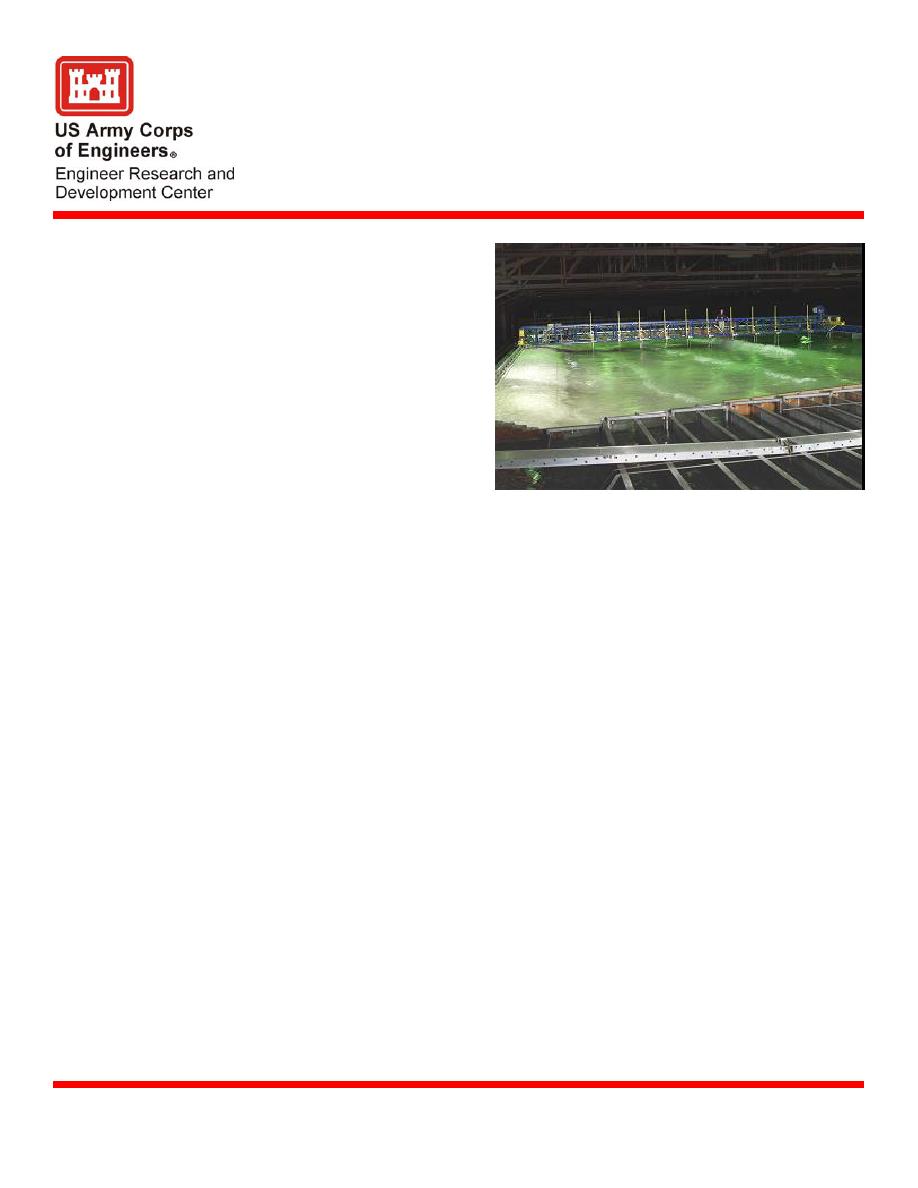
Large-Scale Sediment Transport
Facility
Description
The
state-of-the-art,
mobile-bed
laboratory facility operated by
reproducing surf zone processes
found on natural beaches. The
LSTF
simulates
nearshore
hydrodynamic and sediment
transport processes at a relatively
large geometric scale, including
situations where considerable
sand
is
mobilized
and
transported in suspension.
The Large-Scale Sediment Transport Facility
The LSTF is the only laboratory facility that has studied longshore swash transport.
Additionally, the facility provides an ideal setting to measure detailed surf zone
hydrodynamics and several researchers have used the LSTF for hydrodynamic model
development.
The LSTF is available to U.S. Army Corps of Engineers Districts, public agencies, and
private engineering consultants and design firms for testing and developing shore
protection methods for use in all levels of coastal project design and maintenance and
coastal sediment management.
The facility consists of a 30-m-wide-, 50-m-long-, 1.4-m-deep-basin and includes wave
Specifications
generators, a sand beach, a recirculation system, an instrumentation bridge, and sand traps.
Waves are generated using four synchronized unidirectional spectral wave generators. A
longshore current control system, which includes 20 independent vertical turbine pumps,
recirculates the prescribed longshore current distribution. The mobile, programmable
instrumentation bridge spans the beach in the cross-shore. The bridge serves as a platform
for visual observations and for mounting a cross-shore array of wave gauges, acoustic
Doppler velocimeters, arrays of fiber-optic backscatter sensors, and a rapidly sampling
beach profiler. A series of 20 sediment traps are located in flow channels at the
downstream end of the facility. Traps are suspended from load cells, and the weight of
sand that accumulates in each trap is recorded, which allows calculation of the cross-shore
distribution of longshore transport.
The LSTF is used to improve existing longshore sediment transport predictive equations,
Benefits
obtain data for development and enhancements to numerical models, evaluate and modify
conceptual designs for coastal protection, and perform site-specific studies for coastal
protection. The results lead to more effective designs and cost savings.
U.S. Army Engineer Research and Development Center
October 2004
Coastal and Hydraulics Laboratory (Facility)
www.erdc.usace.army.mil



 Previous Page
Previous Page
